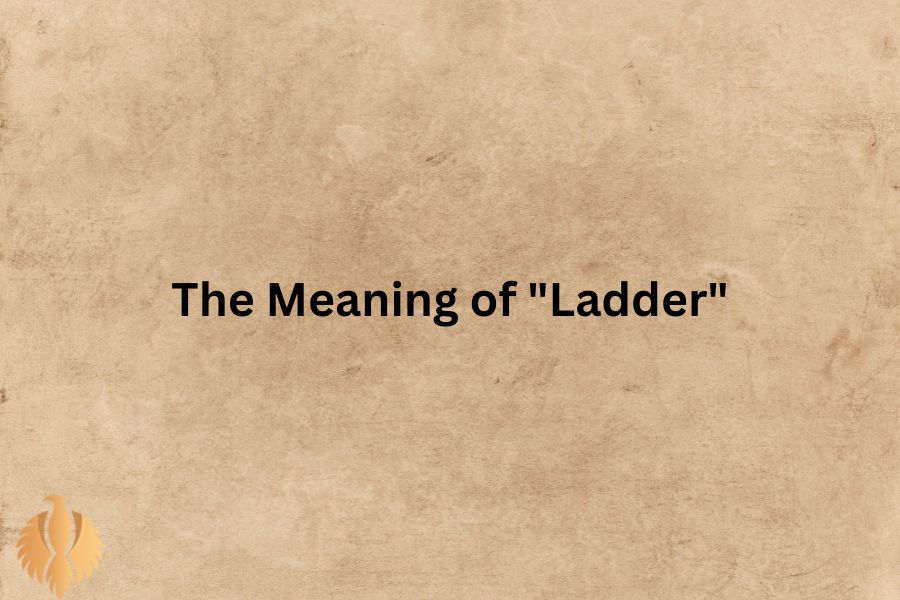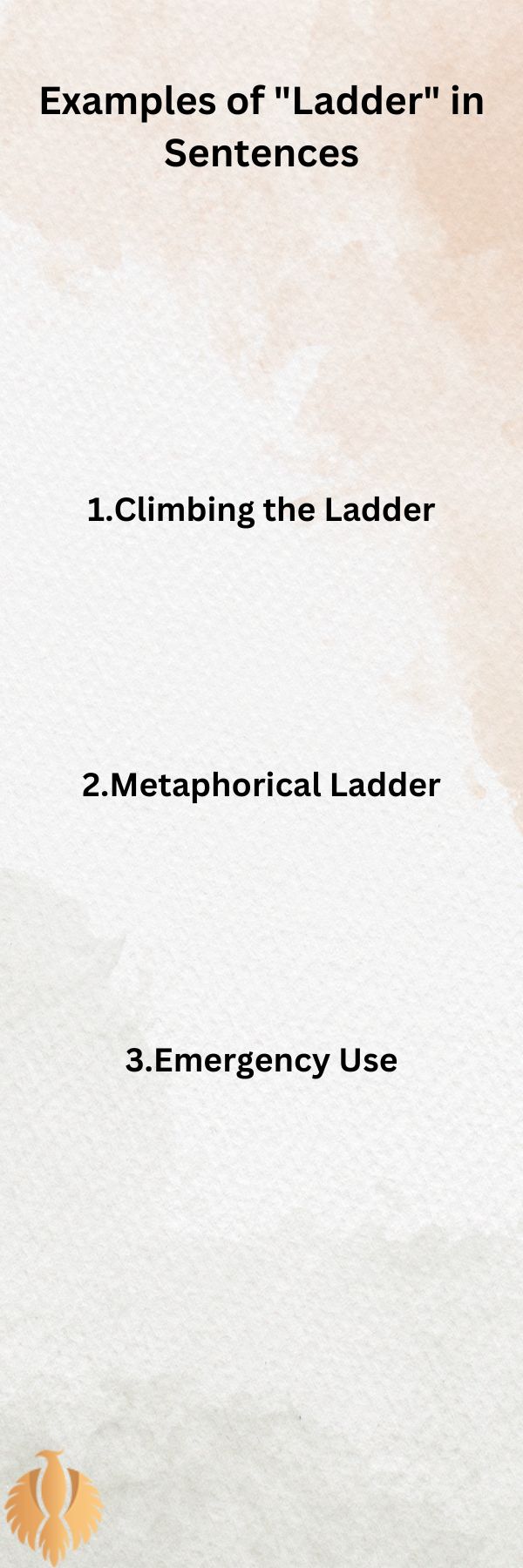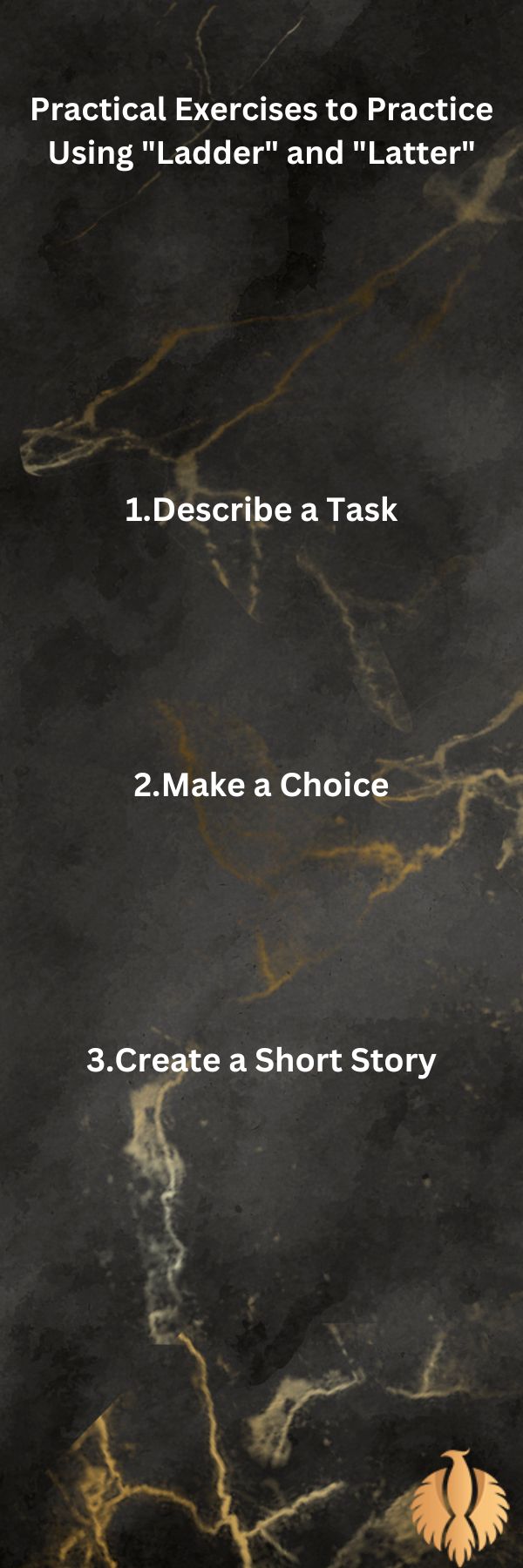Let’s explore the intriguing realm of English words that have similar sounds but very different meanings.
Our concentration today is on the terms “ladder” and “latter.” Despite their similar sounds, “latter” is an adjective that means the second of the two items described, while “ladder” refers to a climbing gear.
Particularly if English is not your first language, it is simple to confuse the two. But don’t worry, I’ll walk you through the distinctions and give you some examples to help you understand.
You Might Also Enjoy: How To Learn English Speaking At Home: My 12 Tips
The Meaning of “Ladder”

First, let’s talk about “ladder.” When I say “ladder,” I’m referring to that tool you probably have in your garage.
You know, the one with rungs that you can climb to reach higher places, like when you need to change a light bulb or clean out the gutters.
A ladder is a physical object, and it’s essential in everyday tasks that require a bit of height.
Here’s a fun fact about ladders: They’ve been around for thousands of years. Ancient paintings found in caves in Spain, dating back over 10,000 years, depict humans using ladders.
It’s amazing how some tools have been so vital throughout human history!
The Meaning of “Latter”
Let’s change our focus to “latter.” Due to its greater abstract nature, this term is a little more difficult. The adjective “latter” designates the second of the two items that were mentioned.
For example, if I’m discussing two things, say apples and oranges, and I say “latter,” I’m referring to the oranges.
The word “latter” comes from the Old English “lætra,” meaning “slower” or “more delayed.” Over time, its meaning evolved to refer to the second of the two mentioned items. It’s a word that helps us specify and clarify our sentences.
You might also enjoy: To Bad Or Too Bad – Correct Grammar + Examples [2024]
Examples of “Ladder” in Sentences

To make things clearer, let me give you some examples of how to use “ladder” in sentences:
- Climbing the Ladder: “I used a ladder to paint the ceiling of my living room.”
- Metaphorical Ladder: “He has climbed the corporate ladder to become the CEO of the company.”
- Emergency Use: “Firefighters quickly set up a ladder to rescue the cat stuck in the tree.”
As you can see, the word “ladder” is quite versatile. It can be used both literally and metaphorically.
Examples of “Latter” in Sentences
Now, let’s look at some examples of how to use “latter” in sentences:
- Choices: “Between tea and coffee, I prefer the latter.”
- Referring Back: “She was offered a position in marketing and sales, but she chose the latter.”
- Time Reference: “The latter part of the movie was more exciting than the beginning.”
In each of these examples, “latter” helps to specify which of the two items we’re talking about. It’s particularly useful in avoiding repetition and making sentences more concise.
You might also enjoy: Which of the Following: Definition + Complete Usage + Grammar
Common Mistakes and How to Avoid Them
It’s easy to see why people mix up “ladder” and “latter.” They sound similar, and if you’re typing quickly, autocorrect might even change one to the other without you noticing. Here are some tips to help you avoid common mistakes:
- Context Clues: Pay attention to the context of your sentence. Is it about something you climb, or is it comparing two items?
- Visual Reminder: Picture a physical ladder when you write the word “ladder.” This mental image can help you remember its meaning.
- Double-Check: If you’re unsure, double-check the definition of the word in a dictionary. It only takes a few seconds and can prevent errors.
Memory Tricks to Differentiate Between “Ladder” and “Latter”
Memory tricks can be incredibly helpful. Here are a couple I use:
- Double D in “Ladder”: Remember that “ladder” has double D’s, and you can imagine each D as the steps you climb on a ladder.
- “Latter” with Two T’s: Think of “latter” as having two T’s, just like the word “two” has a T. It can help remind you that “latter” refers to the second of two items.
Interesting Facts About the Words
Here’s a fun tidbit about “ladder”: In some cultures, ladders are symbolic. In dreams, for instance, climbing a ladder can symbolize progress or reaching new heights in your life or career.
On the flip side, falling off a ladder might indicate setbacks or obstacles. It’s fascinating how everyday objects can carry such symbolic weight.
As for “latter,” did you know it’s often used in legal and formal writing? Lawyers and officials use “latter” to specify and distinguish between two previously mentioned options.
It’s a great example of how precise language can help avoid misunderstandings.
Practical Exercises to Practice Using “Ladder” and “Latter”

To get a better grasp of these words, let’s try some practical exercises. Write sentences using each word in different contexts. Here are a few examples to get you started:
- Describe a Task: Write about a task that requires a ladder, like cleaning windows or picking apples.
- Make a Choice: Compare two items, like types of fruits or vacation destinations, and use “latter” to specify your preference.
- Create a Short Story: Craft a short story that includes both words. Maybe it’s about someone fixing their roof (ladder) and deciding between two career paths (latter).
You might also enjoy: Top 30 Gambling Phrases and Idioms In 2024
Additional Examples in Pop Culture and Literature
The words “ladder” and “latter” have made their appearances in pop culture and literature as well. In the corporate world, you’ll often hear the phrase “climbing the corporate ladder,” signifying someone’s rise through company ranks.
In literature, “latter” is frequently used to add clarity. For example, in many classic novels, authors might write something like, “She was torn between love and duty, and in the latter, she found solace.”
This usage helps clarify which option is being referred to without repetitive language.
Why Understanding the Difference Matters?
Understanding the difference between “ladder” and “latter” is essential for clear communication.
Confusion and misconceptions may result from the misuse of these terms. “I climbed the latter to get to the roof,” you may say, but you meant “ladder.” It completely alters the message in addition to sounding strange.
Moreover, knowing these differences enhances your writing skills. Precise language shows that you have a strong command of English, which can be particularly important in academic, professional, and creative writing.
You might also enjoy: Top 100 Commonly Used Verbs That Start With A [2024]
Final Thoughts
In conclusion, while “ladder” and “latter” may sound similar, their meanings are entirely different. A ladder is a physical tool used for climbing, while the latter is an adjective used to refer to the second of two mentioned items.
By paying attention to context, using memory tricks, and practicing with practical exercises, you can master the use of these words and enhance your communication skills.
So next time you’re writing or speaking, remember the key differences between these two words.
Your clarity and precision in language will undoubtedly shine through, whether you’re climbing a ladder to fix a light or choosing between two options where the latter is preferable. Happy writing!

Hi, welcome to my blog! My name is Omid and I am thrilled to have you here! I am an English language teacher with 12 years of experience and hold multiple international certifications (TESOL, IELTS, TOEFL, PTE, CELTA). Additionally, I hold a PhD in Applied Linguistics with a specialization in Teaching English as a Second Language (TESL), which fuels my passion for teaching English and assisting others in mastering the language. To me, nothing is more rewarding than helping individuals enhance their English language abilities through various methods. So, let’s embark on this journey of learning English together.

![a featured image for Ladder vs. Latter: What's the difference + Examples [2025]](https://phoenixenglishlang.com/wp-content/uploads/2025/01/Ladder-vs.-Latter-Whats-the-difference-Examples-2025.jpg)


